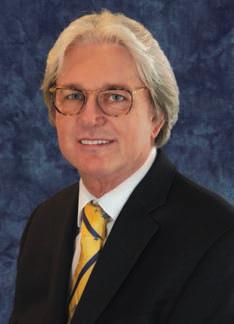
4 minute read
Fantini’s Finance
One in a Million
Lower cost structures mean higher profits for smart gaming companies
Advertisement

By Frank Fantini
There has never been a set of earnings reports released as we saw for the first quarter of this year.
Casino company after casino company announced growing profits, some ahead of the preCovid year of 2019 despite lower revenues.
CEO after CEO crowed about rebounding business and proclaimed that they will maintain their new lower cost structures even after business volumes normalize—meaning that growing revenues will translate into higher EBITDA that will translate into greater free cash flow.
Debt levels, an acute concern when the pandemic forced nearly universal property closures last spring, will come down, positioning them to again invest in growth, they promised.
Perhaps best typifying this ebullient spirit was Caesars CEO Tom Reeg.
Reeg is not given to histrionics. He speaks quietly in tone and measured in words. As a CEO, he consistently under-promises and over-delivers.
On his first-quarter investor call, Reeg was asked by analyst Carlo Santarelli of Deutsche Bank about Caesars achieving $1 billion a quarter in EBITDA. “I would be disappointed if 2022 was less than $4 billion of EBITDA,” Reeg responded.
And on the future based on customers returning to casinos: “I think the demand for entertainment and just fun after the last 12 to 14 months is going to be like nothing any of us have seen in our lifetimes.”
Sell-side analysts responded to the earnings of various companies with equal enthusiasm.
Santarelli said companies often beat consensus earnings forecasts, but Boyd bludgeoned them. Steve Wieczynski of Stifel called Boyd’s margin expansion beyond impressive, as examples of reaction to one company’s earnings beat.
Stock price targets were raised all around.
In this bull market, that combination should have driven their stock prices and those of their regional peers into the stratosphere.
Instead, with a few exceptions, stocks slipped. As examples, in the three days after their earnings beats and buoyant outlooks, Boyd slipped 3.64 percent and Caesars 2.26 percent, as examples. However, their year-to-date performances remain strong with Boyd up 56 percent and Caesars up 41 percent. Given further perspective, both stocks are quintuples from their 52-week lows.
Further evidence that bulls are at least taking a break comes from Penn National and DraftKings, two darlings of the sports betting crowd for whom valuations and profits appear to have little meaning.
PENN has been the best performer among S&P 500 stocks over the last year, up 500 percent. That is a pretty heady achievement for the company that started with one small racetrack in rural Pennsylvania and that just in March joined the list of America’s blue chips.
However, the stock has come back to earth, now down around 40 percent from its $142 high.
And DraftKings, which isn’t expected to turn a profit for a least a couple of years, is down nearly 40 percent from its highs.
This leaves investors to question whether the stocks are just taking a breather before their next run up or whether all the good news is already in the stock prices, as the old saying goes. And in the case of DraftKings, whether the euphoria over growing revenues is starting to recede and some investors are starting to ask, “When and where are the profits?”
Our take is that for the casino operators like Caesars, Boyd, Red Rock Resorts and others, there is a need to let fundamentals catch up with their prices, but that if the good times do roll as expected, there will be another leg up, and maybe a big one.
THE LITTLE ENGINES THAT COULD
Meanwhile, the smallest of the regional operators by market cap haven’t taken a breather. Here are their advances year-to-date as of this writing:
Century Casinos +97 percent
Full House Resorts +149
Golden Entertainment +110
Monarch Casino +20
These companies have some commonalities. Golden and Monarch are heavily Nevada-oriented. Full House and Monarch have transformational projects in Colorado developing destination resorts in markets that have eliminated bet limits. Monarch’s project in Black Hawk is open. Full House’s project in Cripple Creek is about to get under construction.
Golden is expected to reach $5 or even $5.50 a share in free cash flow in a year or two, meaning its current $41 stock price should have room to run. Century is just 5.9 times 2023 enterprise value-to-EBITDA, according to analyst Dave Bain of B Riley.
For those who want to gamble on a gambling stock, Golden also has Pennsylvania to consider.
The company has been lobbying hard for liberal slot route legislation in the Keystone State, which Bain thinks could be approved by autumn.
If Pennsylvania expands routes, each thousand machines could be worth $7.35 a share to Golden, Bain calculates. He thinks a market of 30,000 machines is possible with Golden getting 25 percent share. Using his valuation, that translates to $55 to the stock price.
That is blue sky thinking, but an interesting “what if.”
Frank Fantini is the editor and publisher of Fantini’s Gaming Report. For a free 30-day trial subscription email subscriptions@fantiniresearch.com.







